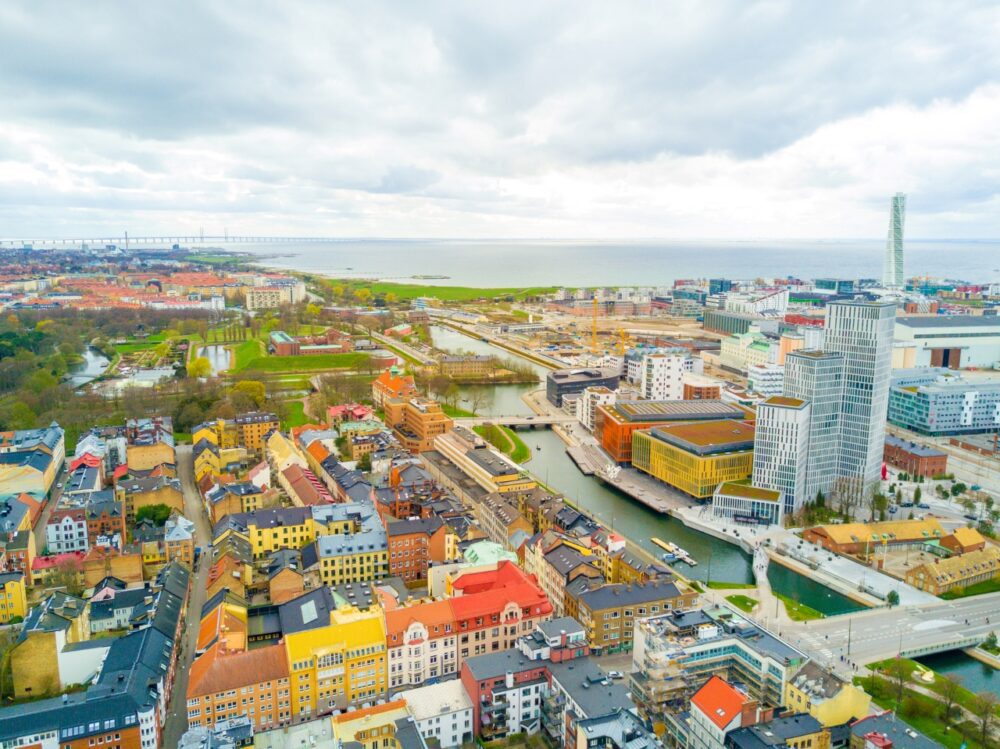
Malmö, Sweden’s third-largest city, is a dynamic destination where old meets new. Located just across the Øresund Bridge from Copenhagen, this charming city offers a mix of historic architecture, modern innovation, and a vibrant food scene. From the medieval Stortorget Square to the futuristic Turning Torso and the scenic waterfront, Malmö is a city full of contrasts. But with so many exciting Scandinavian destinations, you might wonder: is Malmö worth visiting? In this post, we’ll uncover what makes Malmö special, from its cultural diversity to its sustainable urban design, and help you decide if it’s a city you should add to your itinerary.
Table of Contents
Pros – Reasons You Should Visit Malmö
1. The Iconic Turning Torso
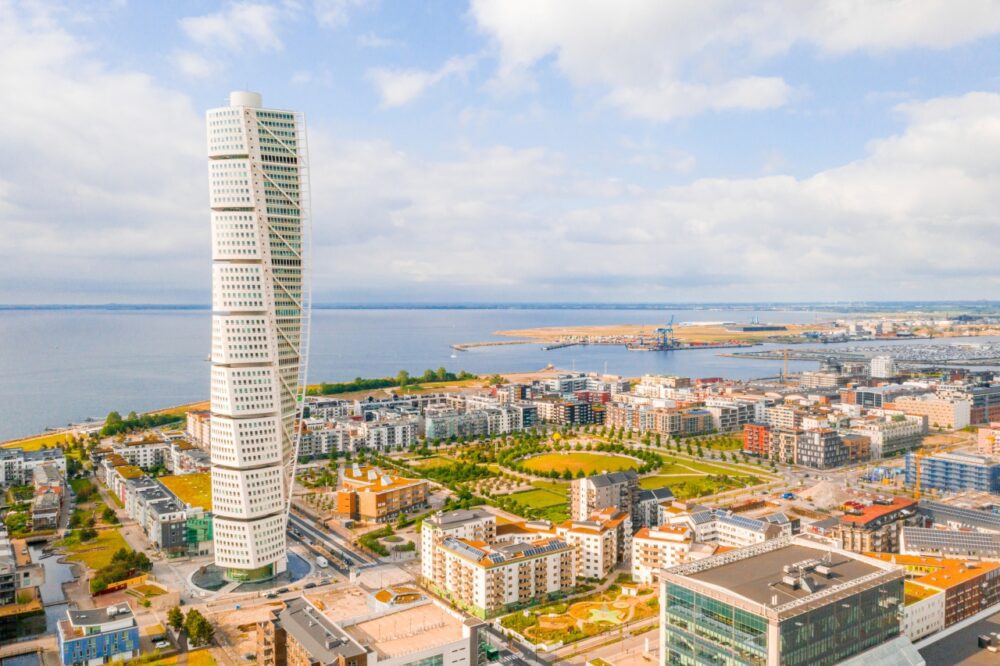
Malmö’s Turning Torso is an architectural marvel and one of Sweden’s most recognisable landmarks. Designed by Santiago Calatrava, this twisting skyscraper rises 190 metres, offering a striking contrast to the city’s historic skyline.
While the building itself isn’t open for public tours, the surrounding Västra Hamnen neighbourhood is worth exploring. This sustainable district features modern architecture, waterfront views, and plenty of cafés and restaurants. I enjoyed a stroll along the Scaniaparken, where locals relaxed by the water and swam in the summer sun. The Turning Torso is an iconic symbol of Malmö’s forward-thinking design and is a must-see for architecture enthusiasts.
2. Sustainable City Living
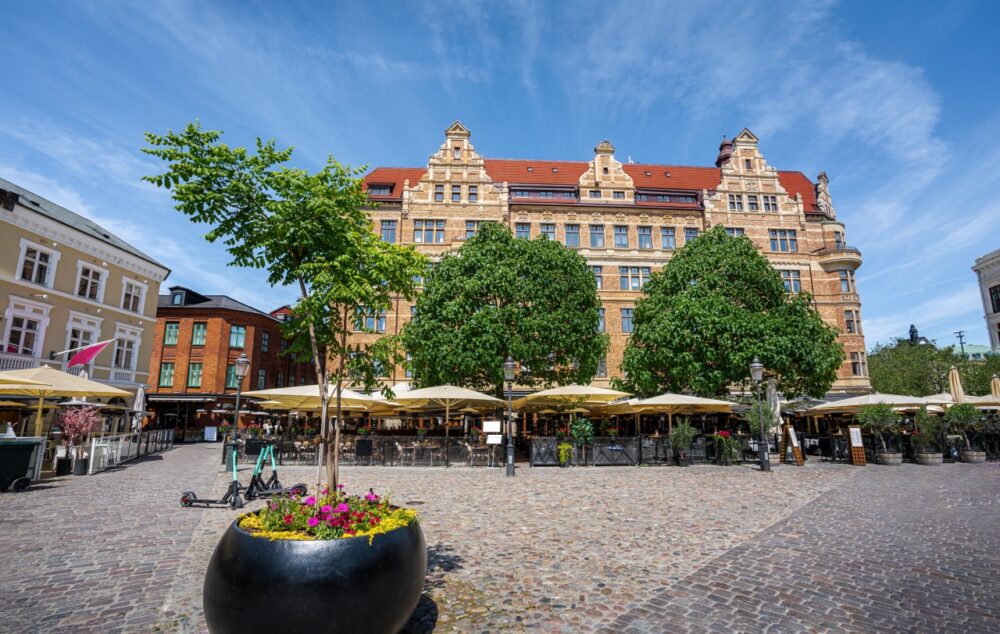
Malmö is a global leader in sustainability, with eco-friendly initiatives woven into everyday life. The city’s commitment to green energy, recycling, and bike-friendly infrastructure makes it a model of sustainable urban living.
Renting a bike and cycling through Malmö’s network of dedicated lanes was a highlight of my visit. The city’s compact layout and flat terrain make it easy to get around without a car. Neighbourhoods like Augustenborg showcase green roofs and urban gardens, blending modern design with environmental responsibility. Exploring Malmö this way felt like a meaningful way to engage with its eco-conscious ethos.
3. Historic Malmöhus Castle
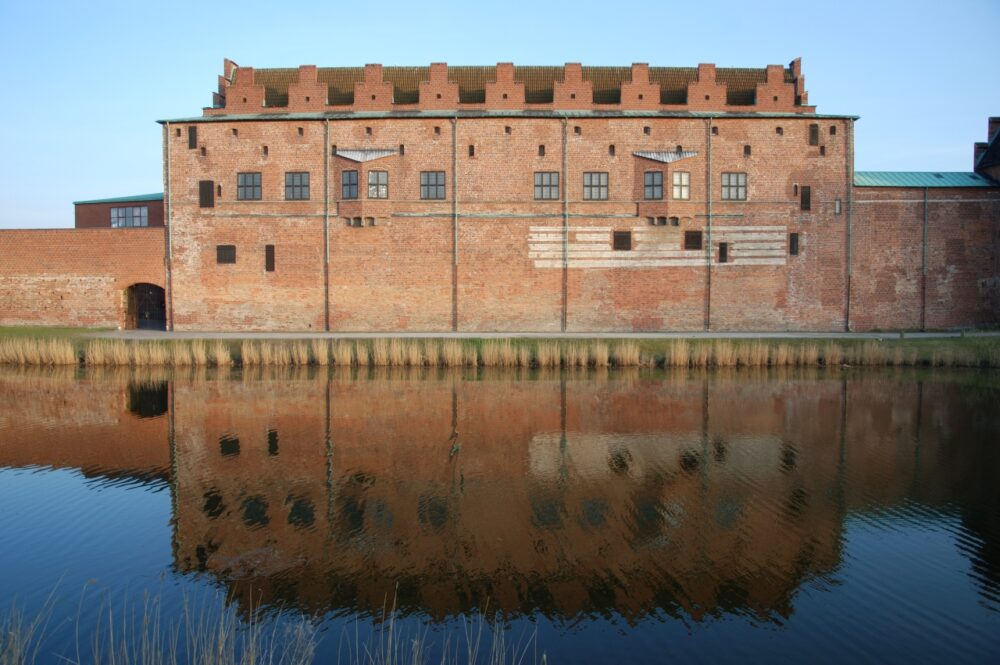
Malmöhus Castle is a window into the city’s fascinating history, dating back to the 16th century. Once a fortress and prison, the castle now houses several museums, including the Malmö Museum, with exhibits on art, history, and natural science.
Walking through the castle’s preserved rooms and learning about its storied past was captivating. The surrounding Kungsparken and Slottsparken provide a tranquil setting for a post-visit stroll. For history buffs, Malmöhus Castle offers a rich dive into Sweden’s past while serving as a cultural hub in the present.
4. Modern Art and Culture
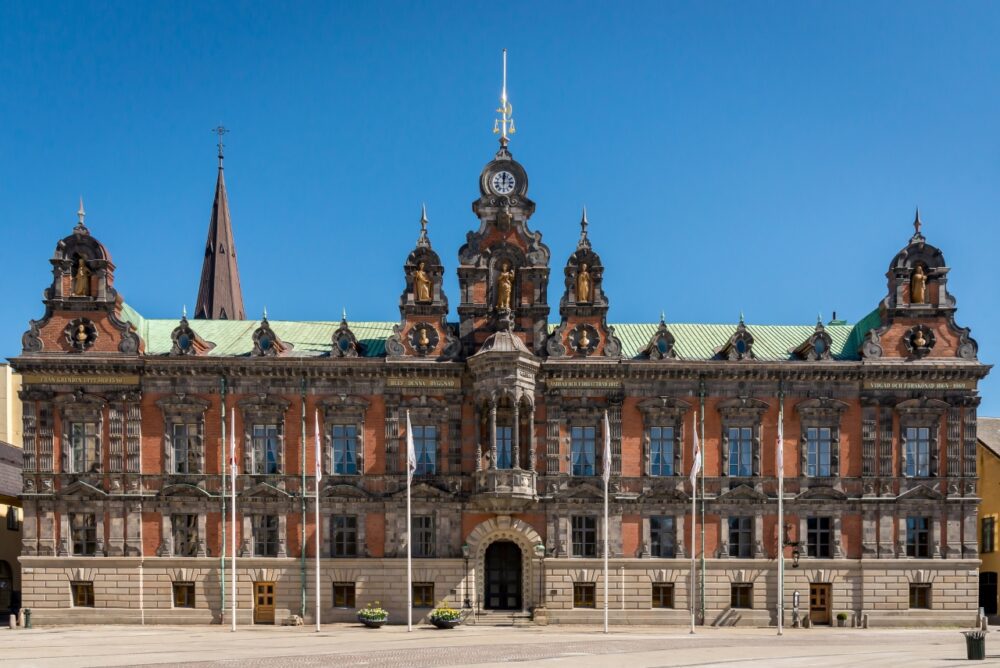
Malmö is a cultural hotspot with a thriving modern art scene. The Moderna Museet Malmö, located in a former power station, features thought-provoking contemporary art exhibits. The city also hosts various festivals, including Malmö Festivalen, which showcases music, food, and performances every August.
I spent an afternoon at Moderna Museet, where the innovative exhibits and industrial setting left a lasting impression. The museum is free to enter, making it accessible to all. Malmö’s cultural offerings are as dynamic as the city itself, blending creativity with accessibility.
5. The Lively Möllevången District
The Möllevången district, or “Möllan,” is Malmö’s most diverse and vibrant neighbourhood. Known for its multicultural atmosphere, it’s home to international eateries, street art, and a lively square that hosts the Möllevångstorget Market, where you can buy fresh produce and artisanal goods.
Exploring Möllevången felt like discovering Malmö’s creative soul. I sampled falafel (Malmö is famous for it!) and admired the colourful murals scattered throughout the area. This district is a must-visit for foodies and anyone who loves a lively, eclectic vibe.
6. A Foodie’s Paradise
Malmö’s food scene is a delicious mix of traditional Swedish fare and global flavours. From cosy cafés serving kanelbullar (cinnamon buns) to trendy restaurants offering New Nordic cuisine, there’s something for every palate.
I loved dining at Bastard, known for its farm-to-table dishes and inventive cocktails. Malmö’s street food scene is also excellent, with falafel and kebab stalls offering affordable and flavourful options. The city’s commitment to sustainability extends to its food, with many eateries focusing on local and organic ingredients.
7. The Øresund Bridge Connection
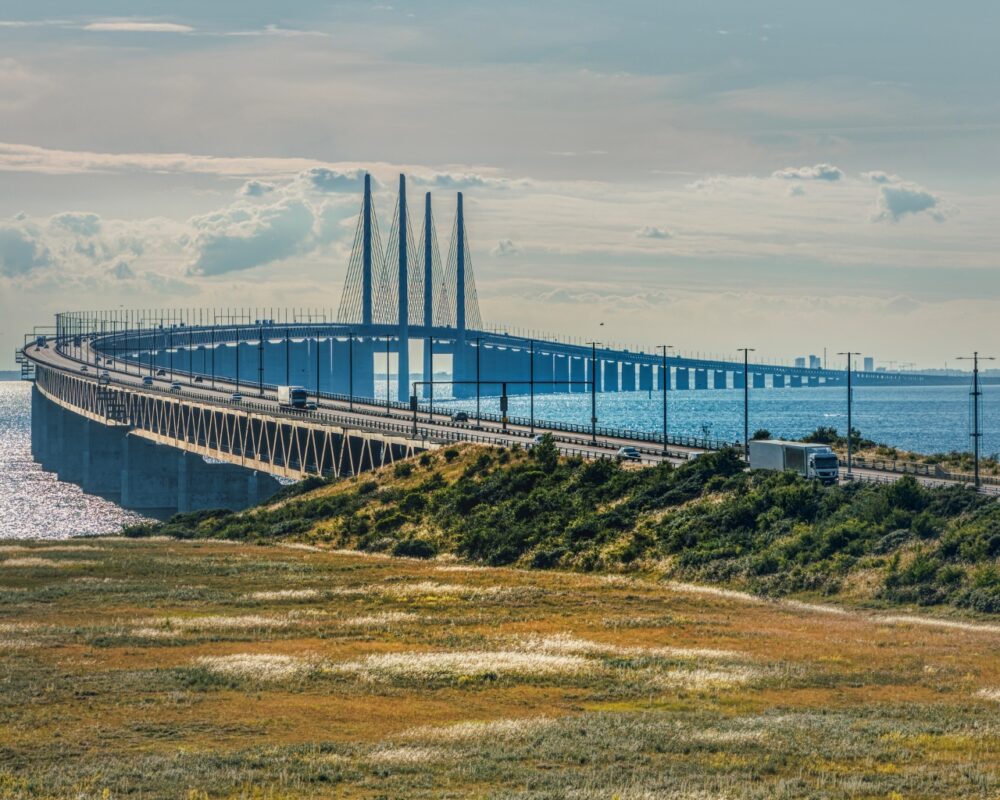
Malmö’s proximity to Copenhagen, connected by the impressive Øresund Bridge, makes it a gateway to Denmark. This 16-kilometre engineering marvel offers stunning views of the sea and is easily accessible by train, car, or bike.
Taking the train across the Øresund Bridge was an unforgettable experience, with the sea glistening beneath. In just 30 minutes, I found myself in the heart of Copenhagen. Malmö’s connection to Denmark adds an extra layer of appeal, making it a perfect base for exploring two countries in one trip.
8. Lush Parks and Green Spaces
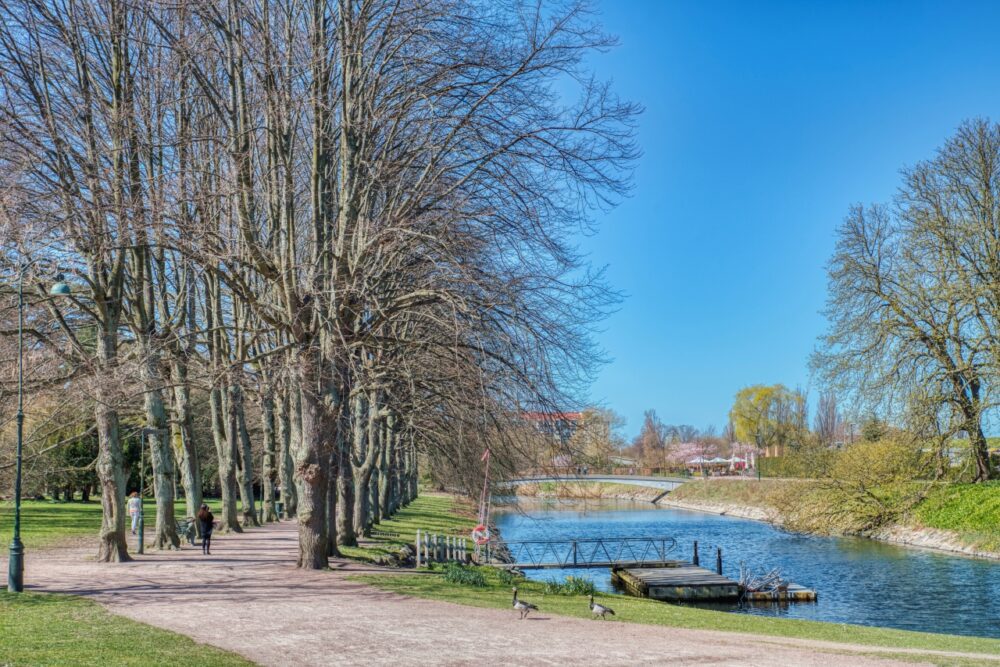
Malmö is filled with beautiful parks and gardens, offering plenty of opportunities to unwind in nature. Kungsparken and Slottsparken, near Malmöhus Castle, are ideal for picnics and leisurely walks. Pildammsparken, with its stunning lake and floral displays, is a favourite among locals.
I spent a peaceful afternoon in Pildammsparken, enjoying the serene atmosphere and vibrant flowers. Malmö’s green spaces are well-maintained and perfect for both relaxation and outdoor activities. Whether you’re cycling, jogging, or simply soaking up the sun, the city’s parks provide a welcome escape from urban life.
9. Family-Friendly Attractions
Malmö is a fantastic destination for families, with attractions like the Malmö Aquarium, the interactive Teknikens och Sjöfartens hus (Technology and Maritime Museum), and the sprawling Folkets Park, which features playgrounds, a small zoo, and outdoor events.
Watching kids enjoy the lively atmosphere at Folkets Park was heartwarming. The mix of entertainment options ensures that families can easily fill a day with fun activities. Malmö’s family-friendly vibe, combined with its accessible layout, makes it a stress-free destination for visitors with children.
10. Rich Multicultural Atmosphere
Malmö is one of Sweden’s most multicultural cities, with over 170 nationalities calling it home. This diversity is reflected in its food, festivals, and cultural offerings. The city’s inclusivity and global influences create a vibrant, welcoming atmosphere.
Walking through Malmö, I loved hearing different languages, seeing a mix of cultural traditions, and sampling foods from around the world. Events like Malmö Arab Film Festival highlight the city’s international flair. Malmö’s diversity is one of its greatest strengths, adding depth and dynamism to its identity.
Cons – Things to Consider When Visiting Malmö
1. Unpredictable Weather
Malmö’s with frequent changes and a high chance of rain, even during the summer months. Strong winds off the Øresund Strait can make it feel cooler than the temperature suggests, especially in open areas like Västra Hamnen or the parks.
When I visited in early summer, a sunny morning quickly turned into a drizzly afternoon, catching me off guard. Packing layers and a waterproof jacket is essential to stay comfortable. While the weather can be a bit of a gamble, the city’s indoor attractions like Malmöhus Castle and Moderna Museet provide excellent options for rainy days.
2. High Cost of Living
As with much of Sweden, Malmö can feel expensive for travellers, particularly when it comes to dining out, shopping, and accommodation. Even casual meals or drinks in central areas like Lilla Torg can be pricey compared to other European cities.
To keep costs down, I found that exploring food markets like Möllevångstorget and opting for budget-friendly eateries, such as falafel stands, was a great alternative. Staying in hostels or booking accommodations outside the city centre can also help stretch your budget. Malmö’s charm is worth the cost, but a bit of planning makes the trip more wallet-friendly.
3. Limited Nightlife Variety
Malmö’s nightlife, while enjoyable, is relatively low-key compared to larger cities like Stockholm or Copenhagen. The city has some cosy bars and clubs, but options can feel limited, especially for those seeking a lively late-night scene or diverse entertainment choices.
During my visit, I enjoyed a drink at Mjölkbaren, a relaxed and stylish spot, but the overall nightlife energy wasn’t as vibrant as in larger cities. If you’re looking for a bigger party scene, Copenhagen’s bustling nightlife is just a quick trip across the Øresund Bridge. Malmö’s nightlife is best for those who appreciate quieter, more intimate settings.
4. Fewer Iconic Landmarks
While Malmö has some standout attractions like the Turning Torso and Malmöhus Castle, it doesn’t boast as many iconic landmarks as other major cities. Visitors looking for a destination packed with world-famous sights might find the city’s offerings more subtle and understated.
That said, Malmö’s charm lies in its modern design, parks, and multicultural atmosphere rather than a long list of “must-see” monuments. Exploring the city’s neighbourhoods and discovering its hidden gems, such as the quirky shops in Davidshallstorg or the relaxed vibe of Ribersborgsstranden, was just as rewarding for me as visiting its main attractions.
5. Language Barrier in Smaller Establishments
While English is widely spoken in Malmö, smaller, local establishments—such as family-run shops or restaurants in less touristy areas—might have limited English-speaking staff. This can occasionally lead to minor communication challenges for non-Swedish speakers.
During my visit, I found that learning a few Swedish phrases, like “Tack” (thank you) and “Kan jag få?” (Can I have?), made interactions smoother and more enjoyable. Locals were friendly and accommodating, but a little effort on your part goes a long way. A translation app can also be handy in these situations.
When to Visit Malmö
The best time to visit Malmö is late spring (May to June) and summer (July to August), when the weather is at its best, with long, sunny days perfect for outdoor activities. Summers bring the city to life with bustling cafes, Ribersborg Beach packed with sunbathers, and events like the Malmö Festival, a celebration of food, music, and art. Autumn (September to October) offers fewer crowds and pleasant temperatures, while winters are quieter but offer cosy charm, particularly around Lilla Torg, Malmö’s historic square.
How to Get to Malmö
Malmö is well-connected to the rest of Europe. The closest airport is Copenhagen Airport (CPH), just across the Øresund Bridge in Denmark. From the airport, trains run directly to Malmö Central Station in just 20 minutes, making it a fast and convenient option. Alternatively, Malmö Airport (MMX), located 30 kilometres outside the city, offers regional flights with carriers like Ryanair and Wizz Air. For travellers arriving from Stockholm or Gothenburg, high-speed trains provide a scenic and efficient route to Malmö, while buses offer a budget-friendly alternative.
Where to Stay in Malmö
Malmö offers a range of accommodation options that cater to different budgets and travel styles:
- Luxury: Gamla Staden (Old Town) – Stay in the heart of Malmö’s historic centre. Options include MJ’s Hotel, a stylish boutique choice with vibrant design, or Clarion Hotel Malmö Live, offering modern comfort with panoramic views of the city.
- Mid-range: Västra Hamnen – Perfect for waterside views near the iconic Turning Torso. Try Park Inn by Radisson, a contemporary hotel with excellent facilities, or Best Western Hotel Royal, located between the Old Town and the waterfront.
- Budget: Möllevången – Trendy and multicultural with affordable options. Consider Moment Hotels for compact, modern rooms or STF Malmö City Hostel, a sociable choice close to central attractions.
Getting Around Malmö
Malmö is a compact and bike-friendly city, making cycling one of the best ways to get around. The Malmö by Bike rental system offers affordable bikes at stations across the city, perfect for exploring flat areas like Kungsparken or the Western Harbour. Walking is another great option, especially around the historic centre and waterfront. For longer distances, Malmö’s Skånetrafiken public transport system, including buses and trains, is efficient and budget-friendly. Day passes provide unlimited travel and access to nearby towns like Lund. Taxis and ride-hailing apps like Bolt are available but less necessary given Malmö’s excellent walkability.
How Long to Spend in Malmö
Two days is ideal for exploring Malmö’s highlights, including the cobbled streets of Gamla Staden, the modern architecture of Västra Hamnen, and the seaside views at Ribersborg Beach. Visit cultural attractions like the Malmö Castle and Moderna Museet, and enjoy fika (Swedish coffee and pastries) at one of the city’s cosy cafes. With an extra day, take a short train ride to Lund, a charming university town, or explore Copenhagen just across the bridge. Malmö’s mix of history, contemporary design, and laid-back atmosphere makes it a perfect city break.
Conclusion
So, is Malmö worth visiting? Absolutely! If you’re drawn to a city with a unique blend of history, modernity, and a welcoming vibe, Malmö is a great choice. Its walkable size, beautiful parks, and proximity to Copenhagen make it an easy and enjoyable destination. That said, it’s a smaller city, so it might not suit those looking for a bustling metropolis or an action-packed itinerary. But for travellers who appreciate charm, creativity, and a relaxed pace, Malmö offers an experience that’s both refreshing and memorable.
